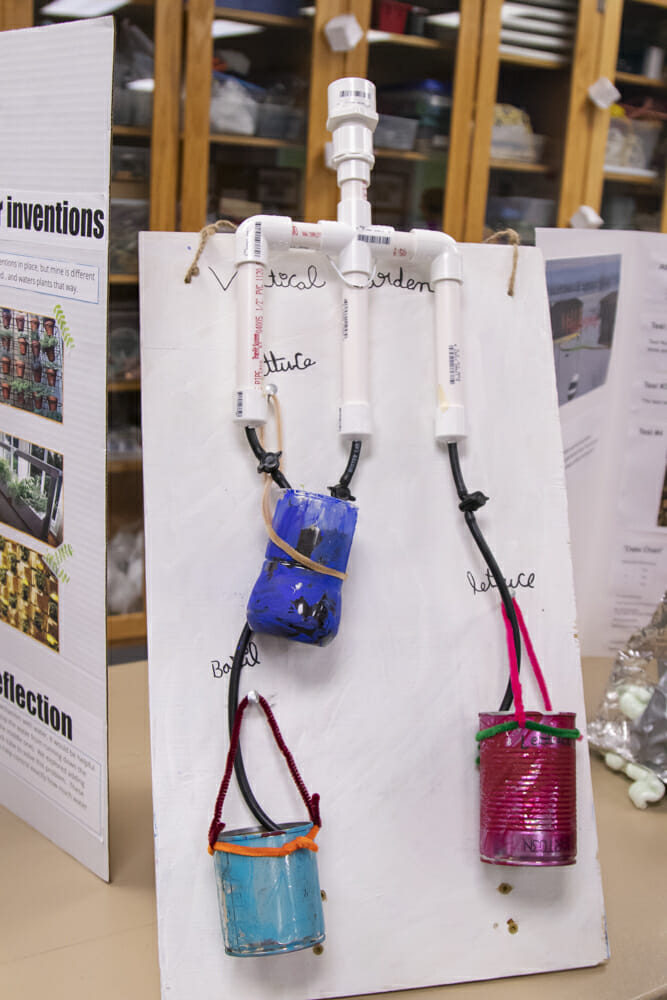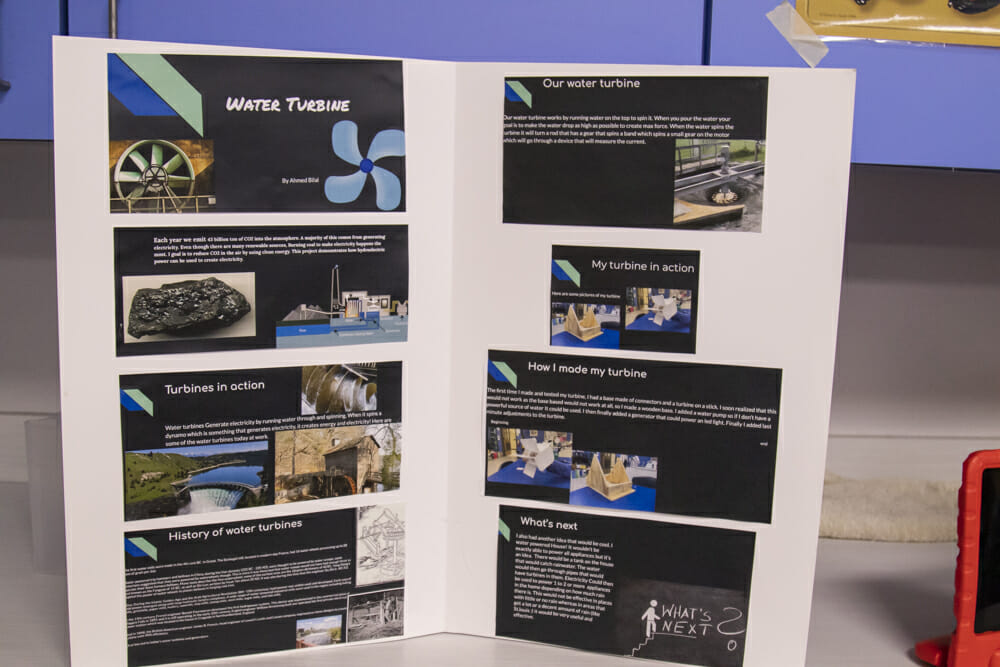By Laura Pupillo, Lower School Science Teacher
This year’s theme for the Invention Fair was to build an invention to reduce a negative impact on the Earth. This theme has been recurring through all of our studies, so focusing on this for our culminating project was a perfect fit. Students selected their ideas and began researching their topics in April. After becoming experts on their topics, students became design thinkers as they designed, built, tested, improved, and tested again and again! Each project required numerous iterations, compelling students to harness their ability to fail and think forward.
Neha J. ’30 reflected on the process of testing and inventing with trial and error, “I invented a boat that can pick up trash. There’s a lot of pollution in the ocean. Five trillion pieces of plastic are estimated in our oceans every year. I enjoyed making [the boat] and testing it out. I learned that it was more challenging than I thought. It kept on sinking so I had to keep starting over.”
To kick off this project, students learned from last year’s fourth-grade students by viewing their final work presentations while exploring the many different ways they could connect their passions to the theme. Since this project took student interest as a driving force, the projects varied in topic. The students had art projects such as natural paints to avoid toxins in the water, natural hair dye to promote good health, fashion that reduced carbon emissions, and remaking crayons to reduce the exponential number of non-biodegradable crayons entering the landfill daily. Carly E. ’30 was one of the students who made natural hair dye. “I made it by using many different food products and mixed them with conditioner,” she said. “I dipped the hair samples in and left them in so they would color. I learned a lot about what hair dye can do to the water system. Real hair dye can actually kill and hurt your hair and lots of people are allergic to the chemicals in them. If you wash your hair out, the chemicals [from the hair dye] go into the water system.”
There were also engineering projects such as boats that collect waste from oceans and rivers, hydropower and wind turbine systems that generate electricity, and cars and airplanes of the future. Samir D. ’30 shared his hard fails making an electric car. “We invented an electric car using a rubber band, LEGO wheels, LEGO axels, tape, popsicle sticks, and straws,” he said. “It was a long process, but it was really fun trying and trying and trying. We had to put the wires in the right place and make sure that it could stand up and drive. We went through four hard fails: plan A, plan B, plan C, and plan D. [For] reducing the environmental impact, we added a shovel on the front to help with recycling.” Charlie W. ’30 shared similar testing trials, “I invented a rainwater collector and filter. First, I tried to collect the water in red solo cups with rocks at the bottom, but that didn’t work, so I duct-taped two red solo cups to a ruler and staked them on the ground. I did that twice. It collected the water and filtered it really well. The trial and error [process] is super fun. The final product worked really well.”
There were upcycled creations that helped students realize the hidden environmental cost involved in basic things such as fashion, household items, and paper. There were efficient, smart home and garden designs and solutions for the global water crisis that nearly 20% of humans face daily. Amaar R. ’30 took on trying to find a solution for the water crisis. “I created a water filter. I made it by taking a plastic bottle and then cutting it from the top so that the bottle part was facing down, and then I put it inside the bottom part of the bottle, and I put a filter in there, and then I put activating charcoal, sand, and pebbles in the filter. I took dirty water, poured it through the filter, and it came out clean. Our filter actually kept falling because we kept tipping it over when we were trying to do something. My favorite thing I learned is how water filters work. I thought it would be much easier to just put some charcoal and sand in a water bottle that filtered. But, it really was not that easy.” Meanwhile, Finn F. ’30 enjoyed playing with metals to maximize solar power. He said, “I created a solar-powered house with a backup switch. I enjoyed sodering the metal to the LED light to connect it to the solar panel. I liked it because it really calms me down watching metal melt because I don’t see it very often.”
Furthermore, there were environmental solutions such as coastal erosion, reducing food waste, using food waste for fuel, and helping animals. Finally, we had a student engineer a box that helped people feel good with the thought that happy people are more likely to do good for others.
If you asked the students about the process of becoming an inventor, they would all say it was much harder than they could have ever imagined, but all the hard work made the culmination of the fair all the more exciting. They certainly earned their celebration with the final presentations.
How inspiring to see the wealth of expertise and enthusiasm that has blossomed in this group of young scientists. We can count on these rising fifth-grade students to continue to make a difference!




















































